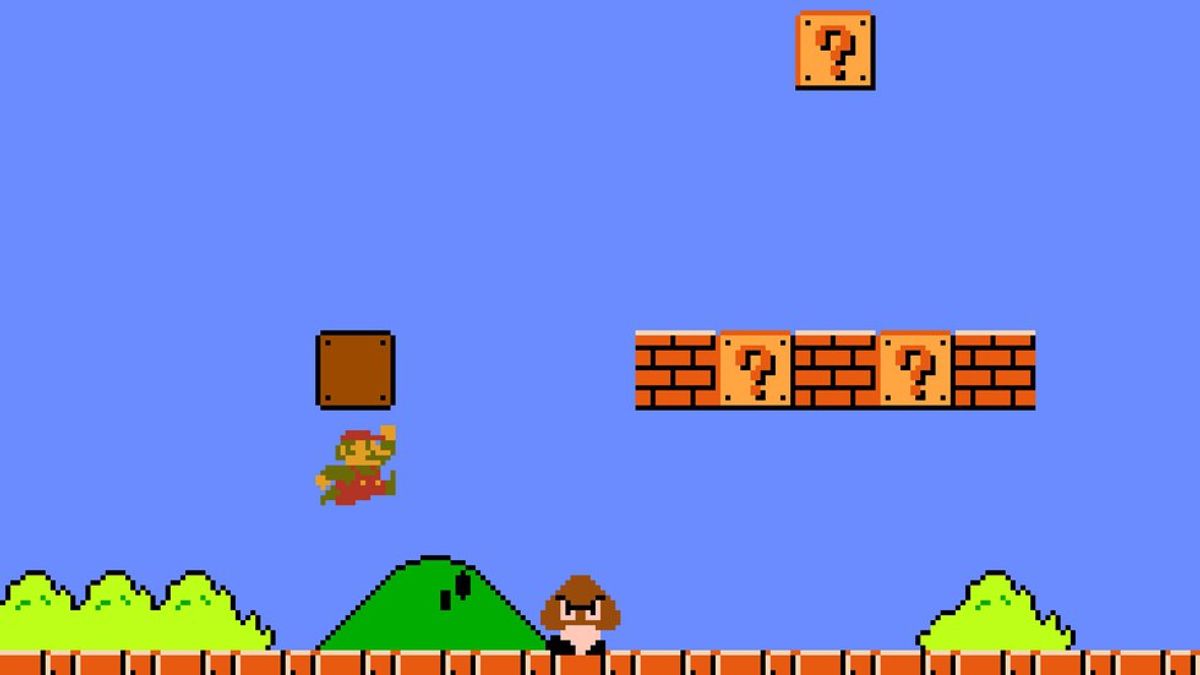I'm still not really feeling like politics. So to other news I go – usually tech or movies, which made March 3, 2017 a good day for that kind of news stories. Logan was released, and the Nintendo Switch, the newest console built by the Japanese video game giant, appeared on shelves after months of hype. In general, it would not be really debatable that Nintendo has fallen on hard times when compared to other industry giants like Sony, Microsoft, and even Valve. But there was a time, not that long ago, where Nintendo ruled the video game market. For a company that went through countless incarnations and products to becoming the world leader in video games until the early 2000s, Nintendo has managed to stay afloat despite the challenges it faces. And here's how they did it.
Oddly
enough, the story of a video game company begins in turn of the 20th
century Japan. Founded in 1889 by Fusajiro Yamauchi, “Nintendo
Koppai” as it was called, produced playing cards known as Hanafuda.
These cards were very different from Western playing cards, featuring
images of flowers (the games played are based on images, not
numbers), as typical decks of cards were banned in Japan because they
were believed to promote gambling. The card industry continued well
into the 20th
century, with the handcrafted cards were being used for countless
games, now widely popular in Japan. By 1951, the “Nintendo Playing
Card” company was producing thousands of cards a year, but still
faced the stigma of possible gambling. To keep themselves safe,
Nintendo partnered with Disney to produce licensed cards, the first
of their kind in Japan. This increased Nintendo's income
exponentially, and by 1963, was officially named “Nintendo.”
At this point,
Nintendo was attempting to find other venues in case the cards
stopped selling. Experiencing countless failures, including a taxi
service and a “love hotel” chain (hotels designed to service
couples looking to get away for the night), Nintendo eventually ended
up starting to make small toys by the end of the 1960s. In 1971, the
first mainstream video game, Computer Space, was released on
an arcade cabinet, but the concept did not catch on until 1972 when
an American company, Atari, produced Pong. That same year,
Magnavox put the first home video game console on the market.
Nintendo, then still a toy company, worked with Magnavox to create a
gun accessory for the console (not unlike their future NES Zapper).
Nintendo released their own Japan-exclusive console five years later,
called the Color TV-Game 6 (the “6” representing how many
Pong-style games were built-in). It was a major success in the
test runs and early releases that just a week later, the Color
TV-Game 15 came out. Continuing to produce these consoles over the
next few years, Nintendo hired Shigeru Miaymoto as a junior designer.
However, by 1980, the console line had ran its course, and it quietly
ended.
Nintendo adapted
hit arcade games to the first handheld system, the Game and Watch –
the games were still permanently built into the device. In 1981,
Miaymoto's first game was out to the cabinets, being the now famous
Donkey Kong. The game was the first worldwide success for the
company, leading to the two-player arcade Mario Bros., also
created by Miaymoto. By 1983, due to the failure of E.T. The Extra
Terrestrial, the video game market took a massive hit in America.
Meanwhile, Nintendo developed a cartridge-based console, not unlike
Atari's systems. The original designs failed, and the games weren't
memorable – until the crash and a redesign adjusted and solidified
the “Famicom” console. Over the next couple of years, Nintendo
was trying to figure out how to keep their console from falling to
the same pit Atari found themselves in. They developed the “Nintendo
Seal of Quality” as to ensure the buyer that what they were
purchasing was a real, fully-functional Nintendo product. Now dubbed
the “Nintendo Entertainment System,” a trial run was produced for
stores in New York City. The console came bundled with a controller,
a light gun, the robotic second player R.O.B. (available in specially marked boxes), and a cartridge
containing Duck Hunt and Super Mario Bros. From there,
the NES proved to be another big hit, and it was mass-produced.
The Nintendo
Entertainment System brought back the thought-dead video game
industry in America, with Japanese hits like The Legend of Zelda,
Metroid, Ice Climber, and Super Mario Bros. being just as
successful here. Of course, there was the bootleg cartridges, such as
the infamous Bible Adventures. But overall, the quality
control of the company was unmatched at this point in time.
Competitors entered the market, such as Commodore and yet another
Japanese company, Sega – the latter of which became the strongest
rival of Nintendo. Throughout the late 80s, Nintendo always found
themselves steps ahead of the others – by the end of the decade,
the Game Boy was released as the first handheld console with
interchangeable games. In 1993, the NES was replaced by the stronger,
faster, and even sleeker model, the Super Nintendo. Among the new
product of the 1990s was Pokemon, a groundbreaking Game Boy
game that allowed trading and even battling between players using the
newly released “Link Cable.” The Nintendo 64 followed at the turn of the
millennium, creating new standards for 3D gaming, with many of the
games considered some of the greatest ever made (including The
Legend of Zelda: Ocarina of Time and Goldeneye). This was
followed by the GameCube, Wii, Wii U, and most recently, the Nintendo
Switch.
Despite now being
seen as a more family-friendly and less innovative company than the
major competitors, Nintendo still continues to put their all into
every product. From selected Wii U games being able to be played on
the touchpad to the Switch, a console that can be plugged into the
TV, brought onto a table, or on the go as a handheld, without loosing
data (battery and screen resolution notwithstanding). From humble
origins as a card company to having their own exclusive store in New
York City, Nintendo has formed an empire of video games and creative
exclusive titles. It looks like the Switch will be the new leading
system for the company, perhaps bringing them back to being a true
fighter in the console wars. Regardless of opinion now, the video
game market would not be what it is today without playing cards, a
licensing deal, and an experiment in home arcade gaming – all under
the logo and name of Nintendo.





 Photo by
Photo by  Photo by
Photo by  Photo by
Photo by  Photo by
Photo by 


 people sitting on chair in front of computer
people sitting on chair in front of computer



 all stars lol GIF by Lifetime
all stars lol GIF by Lifetime two women talking while looking at laptop computerPhoto by
two women talking while looking at laptop computerPhoto by  shallow focus photography of two boys doing wacky facesPhoto by
shallow focus photography of two boys doing wacky facesPhoto by  happy birthday balloons with happy birthday textPhoto by
happy birthday balloons with happy birthday textPhoto by  itty-bitty living space." | The Genie shows Aladdin how… | Flickr
itty-bitty living space." | The Genie shows Aladdin how… | Flickr shallow focus photography of dog and catPhoto by
shallow focus photography of dog and catPhoto by  yellow Volkswagen van on roadPhoto by
yellow Volkswagen van on roadPhoto by  orange i have a crush on you neon light signagePhoto by
orange i have a crush on you neon light signagePhoto by  5 Tattoos Artist That Will Make You Want A Tattoo
5 Tattoos Artist That Will Make You Want A Tattoo woman biting pencil while sitting on chair in front of computer during daytimePhoto by
woman biting pencil while sitting on chair in front of computer during daytimePhoto by  a scrabbled wooden block spelling the word prizePhoto by
a scrabbled wooden block spelling the word prizePhoto by 
 StableDiffusion
StableDiffusion
 StableDiffusion
StableDiffusion
 StableDiffusion
StableDiffusion

 women sitting on rock near body of waterPhoto by
women sitting on rock near body of waterPhoto by 








